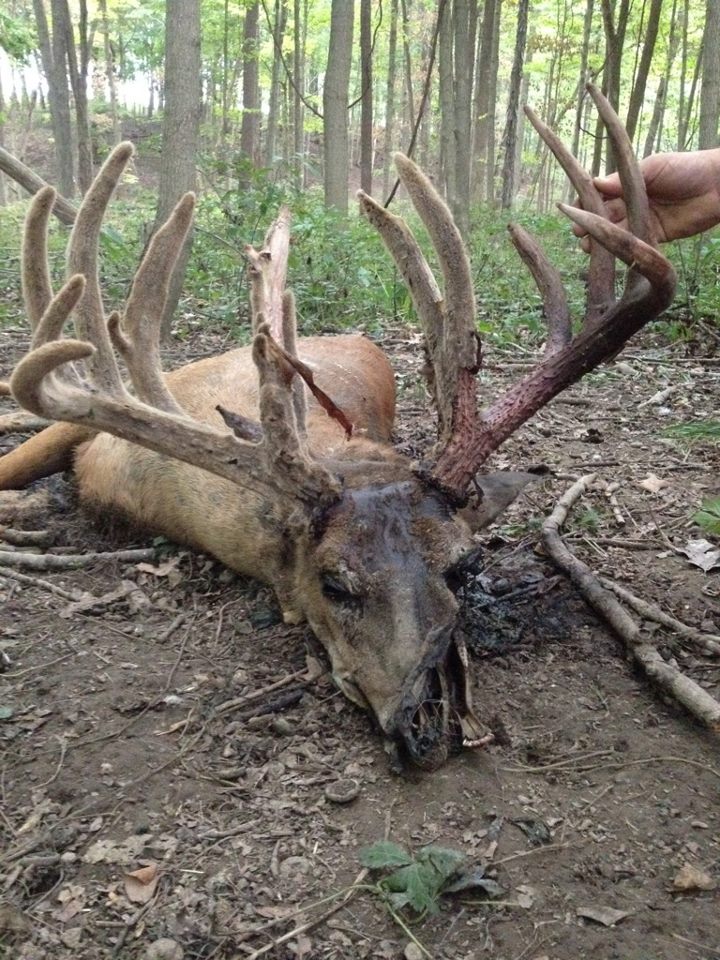It’s time once again time to undertake the unpleasant but necessary task of checking for outbreaks of Epizootic Hemorrhagic Disease (EHD or HD) in your deer herd. EHD can break out where any disease-carrying midges are found. If it erupts on your back forty, your deer season could be a short one. EHD is a fatal or near-fatal disease, causing dramatic whitetail die-offs in regions of severe outbreaks. Late summer and early fall is outbreak time for the disease, which is commonly, but incorrectly, called “blue tongue.”
Start checking now and continue checking until the first killing frost. EHD-infected whitetails are often found near watering areas as they crave water with the onset of the disease. Dead deer found in or near water sources on watering locations in late summer and fall usually indicates an EHD outbreak, as they typically head for water to ease the effects of high fever. Older age bucks seem to be particularly vulnerable to the deadly disease.

What is EHD
EHD is caused by the bites of infected midges, which are commonly found near water on exposed mud flats caused by hot and dry conditions. They breed in muddy wet areas typically found near bodies of water, swamps, and bogs. Symptoms include loss of appetite, fear of humans, weakness, rapid respiration, panting, and fever. Death generally occurs between 8 and 36 hours after the onset of symptoms. While EHD has been most common in southern states, uncommonly warm, dry weather in northern areas in recent years is a possible reason for the spread of outbreaks. This year has been quite wet in many whitetail areas, but whitetail watchers need to keep an eye on watering holes from this point forward to the first frost. Report any and all dead deer found at these sites to state conservation officials.
Deer populations generally bounce back from EHD outbreaks in 2 to 3 years, but a serious outbreak of EHD can impact your deer hunting for years to come.



















![The Best Deer Camp Chili [VIDEO] Deer Chili Ingredients, Tomatoes, Chili Spices](/wp-content/uploads/2015/10/Deer-Chili-Deer-Camp-Recipe-218x150.jpg)
![How to Call Elk Early in the Season [VIDEO]](/wp-content/uploads/2016/08/byers003-218x150.jpg)




![Idiots Disturb Hunter: How Would You Have Handled It? [VIDEO]](/wp-content/uploads/2015/10/DSC00110-e1474487693878-100x70.jpg)
![Albino Buck Shocked to Shed His Antlers [VIDEO]](/wp-content/uploads/2015/10/AlbinoDeer-100x70.jpg)